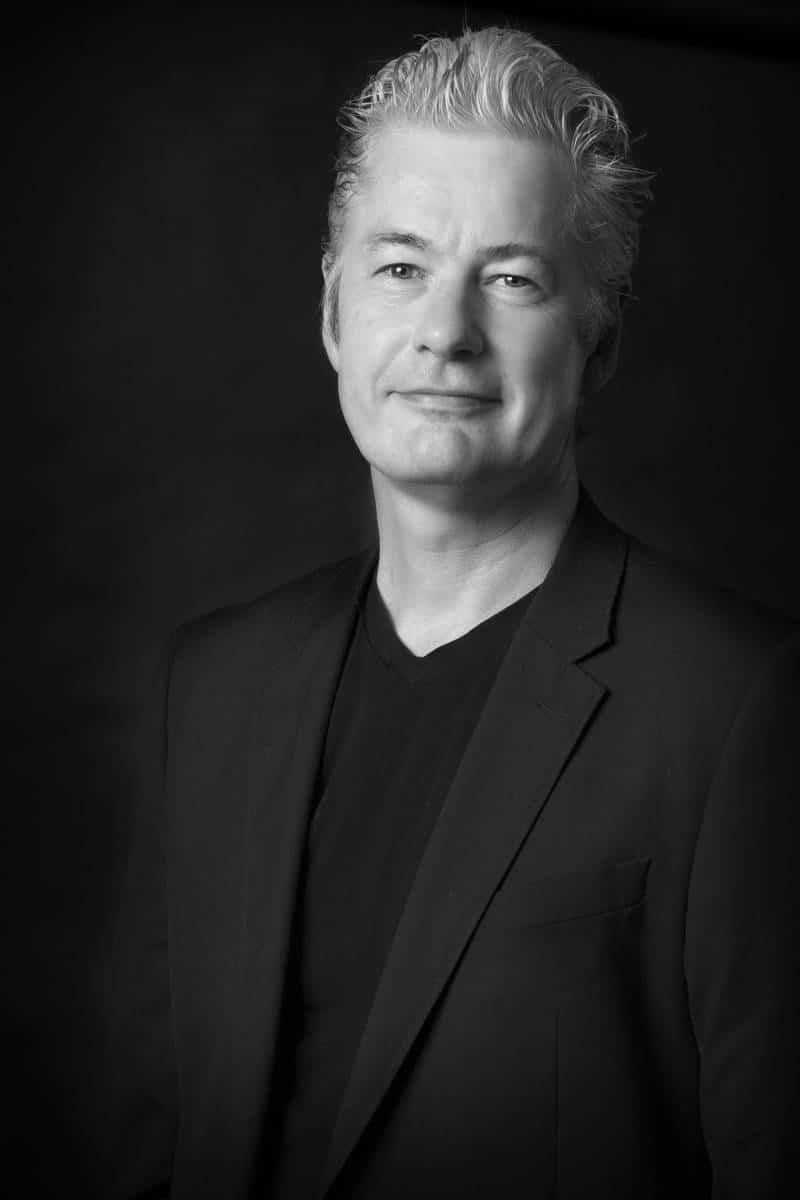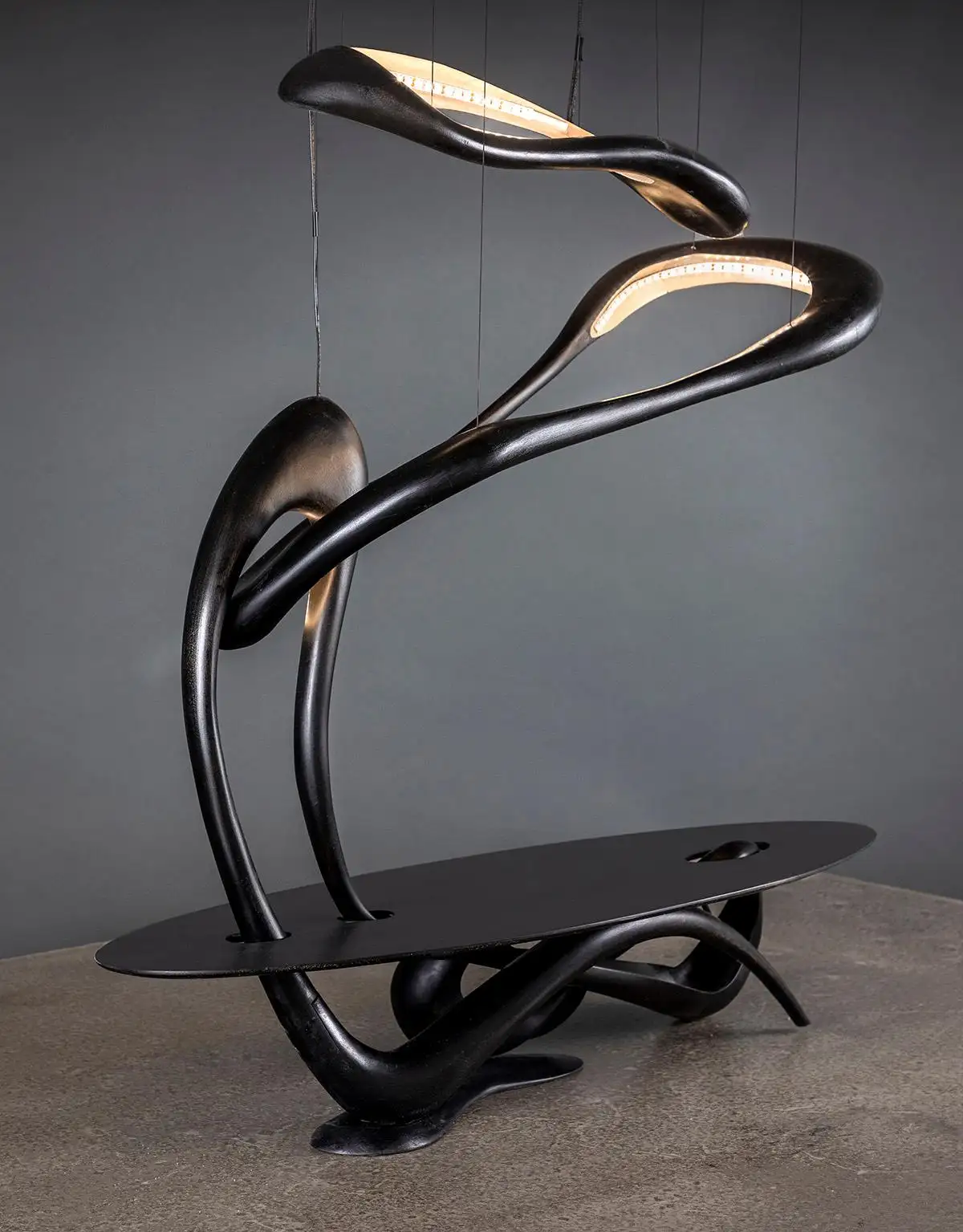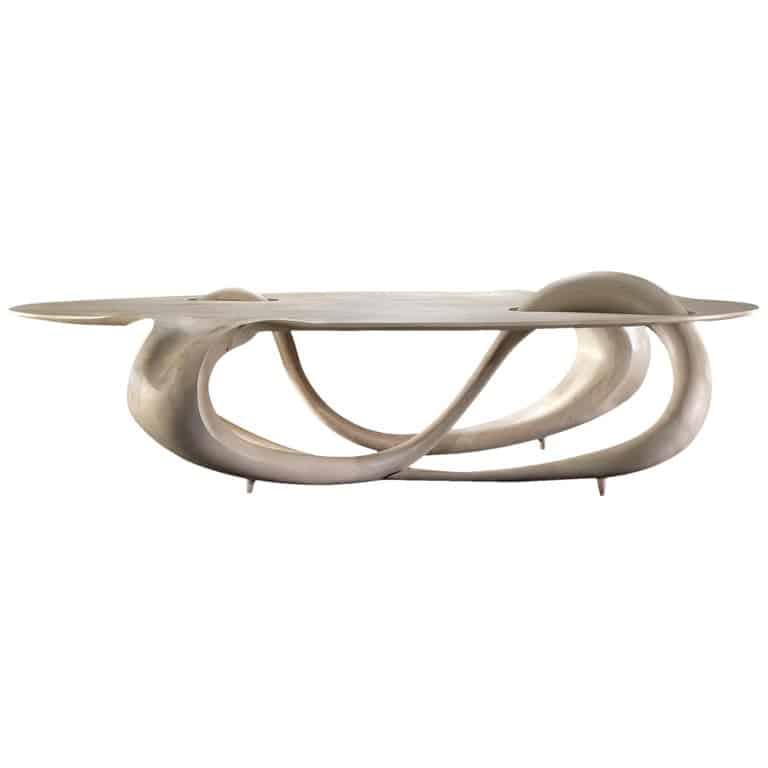
Gildas BERTHELOT
1. Where were you born and where are you from ?
I was born in Sainte-Geneviève-des-Bois in the suburbs of Paris.
2. What is your first memory connected to the art world ?
When I was a child, we went quite frequently as a family to the Louvre Museum or the Museum of Decorative Arts or even the Rodin Museum. Additionally, my father was a cabinetmaker. He made copies of period furniture and restored antique ones. The question of beauty imposed itself on me at a very young age.
3. Have you always worked in the art/design field ?
Not at all. Like many artists, I used a second job to pay my rent. When I was a student at the Beaux-Arts in Paris, alongside my studies, I worked on my own as a cabinetmaker-restorer of old furniture, a trade that I had learned before coming to the Beaux-Arts in Paris. Once in Montreal, I worked in different fields: scenography as a carpenter or sculptor, artistic director for video clips. Lastly, the last job I had outside of my artistic practice was teaching in a school of cabinetmaking.
4. What led you to the design creation ?
I learned the profession of cabinetmaking at a young age in my father’s workshop. Later on, I continued my studies in sculpture at the School of Fine Arts in Paris. I graduated in 1989. A few years later and almost naturally, I undertook a synthesis between cabinetmaking and sculpture. In fact, I don’t feel like a designer, I have neither the spirit nor the skill.
5. How would you describe your creative process and it influences ?
It all starts with drawing. I have always loved drawing and I have totally integrated it into my working method. Craftsmanship requires significant technical means: sharp tools, machines, plans, templates, etc. Drawing involves another field of expertise. Drawing is first of all an impulse and is as much a matter of introspection as of liberation. When my intentions become clearer, I make a scale model.
Between the drawing and the model, I like the notion of “passage”, that is to say this moment when the premises of an idea or rather a kind of mental image become sketches made on the corner of a table with an HB pencil and an eraser. This image becomes more real when I move on to the model in plasticine or styrofoam or in wood. I am then in the field of sculpture and therefore of reality. It’s yet another passage during the drawing and all the technical problems appear: stability, functionality, ergonomics…
6. Could you describe a typical day of your work ?
I have a very simple life. I usually get up pretty early, around 6:00 a.m. Sometimes I start my day with an hour or two of drawing. Around 8:30 am, I go to my studio that is connected to my home. Sometimes during the day, I stop working in my workshop to take care of the management part: answering emails, accounting etc. I work all day until around 6:00 p.m.
7. Why did you choose the specific materials you work with ?
During my career, I have used all kinds of materials, but it is with wood that I have the most intimate relationship. Moreover, it is a material that I know well. I learned the trade of cabinetmaker at a young age in the workshop of my father, who as a cabinetmaker passed on his passion and knowledge to me. Wood, by its constitution, allows a considerable range of colors and aspects. It can be tinted, varnished, waxed, sanded or be left raw. It can be matte or shiny. Wood allowed me, I believe, to realize myself as a sculptor.


8. What are the technical particularities of your creations ?
All my furniture is made of solid wood, usually maple or sometimes black walnut. The boards are rolled to obtain a block of wood that I carve. The blocks are assembled to each other by means of tenons and mortises. Subsequently each block is scraped and sanded. These last two steps are fundamental to obtain a fluid and homogeneous shape. The piece of furniture is then oiled.
9. What advices could you give to beginning artists who would like to create sculptural design works ?
I would advise a young artist to keep an open mind, to always question their work, to avoid easy paths because they don’t go anywhere. Finally, I would advise him to avoid disillusioned and cynical people who can try to drag them down.
10. If your works had to belong to a design movement, in which one would you define it ?
I do not see myself in any movement but I would have liked to live at the time of Art Nouveau
11. What designers have influenced you ?
The sculptors have influenced me at least as much as the designers, and I feel much more like a sculptor than a designer. English sculptors were decisive for me. I’m thinking of Tony Cragg, Richard Deacon, Anish Kapoor. As for the designers, Ron Arad, Zaha Hadid influenced me a lot.
12. What contemporary designers do you appreciate ?
I really like Starck, the Campana brothers, the Bouroulec brothers and the designers of the Menphis movement: Andrea Branzi, Ettore Sottsass or Michele De Lucchi.
And also Joseph Walsh.
13. What contemporary artists (in any kind of art) have you been inspired by ?
Strangely, I really like minimalist artists, whether in sculpture (Judd, Serra, Flavin) or in music (Glass, Part, Reich). Architecture is of great interest to me. Jean Nouvelle, Franck Gerhy, Norman Foster are masters of architecture who influence me a lot.
14. If you had to summarize your creations in one word or sentence, what would it be ?
Three words: fluidity, strange, carnal.
15. Is there anything you would like to add?
It was very nice to answer these questions. Thank you.
Proust Questionnaire with very short answers (one or a few words) :
(The Proust Questionnaire is a set of questions answered by the French writer Marcel Proust. Other historical figures who have answered confession albums are Oscar Wilde, Karl Marx, Arthur Conan Doyle, Stéphane Mallarmé, Paul Cézanne…)
1. What is your idea of perfect happiness?
To live by the sea
2. What is your greatest fear?
To be poor
3. What is the trait you most deplore in yourself?
Procrastination (I got a lot better)
4. What is the trait you most deplore in others?
Meanness
5. Which living person do you most admire?
Jean Nouvelle. Every time I go to Paris I go through the Institut du Monde Arabe
6. What is your greatest extravagance?
I am not extravagant except sometimes when I design furniture.
7. What is your current state of mind?
I am calm and serene.
8. What do you consider the most overrated virtue?
Prudence
9. What is the quality you most like in a man ?
Resilience
10. What is the quality you most like in a woman ?
Resilience and punctuality
11. Which words or phrases do you most overuse?
“Hello, how are you doing?”
12. Which talent would you most like to have?
To know how to play the piano
13. If you could change one thing about yourself, what would it be?
My lack of confidence (I have made a lot of progress)
14. What do you consider your greatest achievement?
Doing a job that I love.
15. If you were to die and come back as a person or a thing, what would it be?
I haven’t the slightest idea!
16. Where would you most like to live?
By the sea.
17. What is your most treasured possession?
My tireless imagination
18. What do you regard as the lowest depth of misery?
Doing a job you don’t like and wait for retirement
19. What is your favorite occupation?
Waking up with an idea of shape, getting up and drawing it.
20. What is your most marked characteristic?
My liking for solitude.
21. What do you most value in your friends?
Their presence.
22. Who are your favorite writers?
Chateaubrillant. Paul Auster. Houellebecq. Primo Levi.
23. Who is your hero of fiction?
Zorro (but it was a long time ago).
24. Which historical figure do you most identify with?
Blaise Cendrars. Éric Tabarly.
25. Who are your heroes in real life?
I don’t have any.
26. What are your favorite names?
I do not understand the question.
27. What is it that you most dislike?
Melting snow (in Quebec it lasts about two to three weeks)
28. What is your greatest regret?
I have no regrets (I’m like Edith Piaf)
29. How would you like to die?
I would like to die at 120 looking at the sea and drinking a glass of Muscadet.
30. What is your motto?
I do not have a motto.


